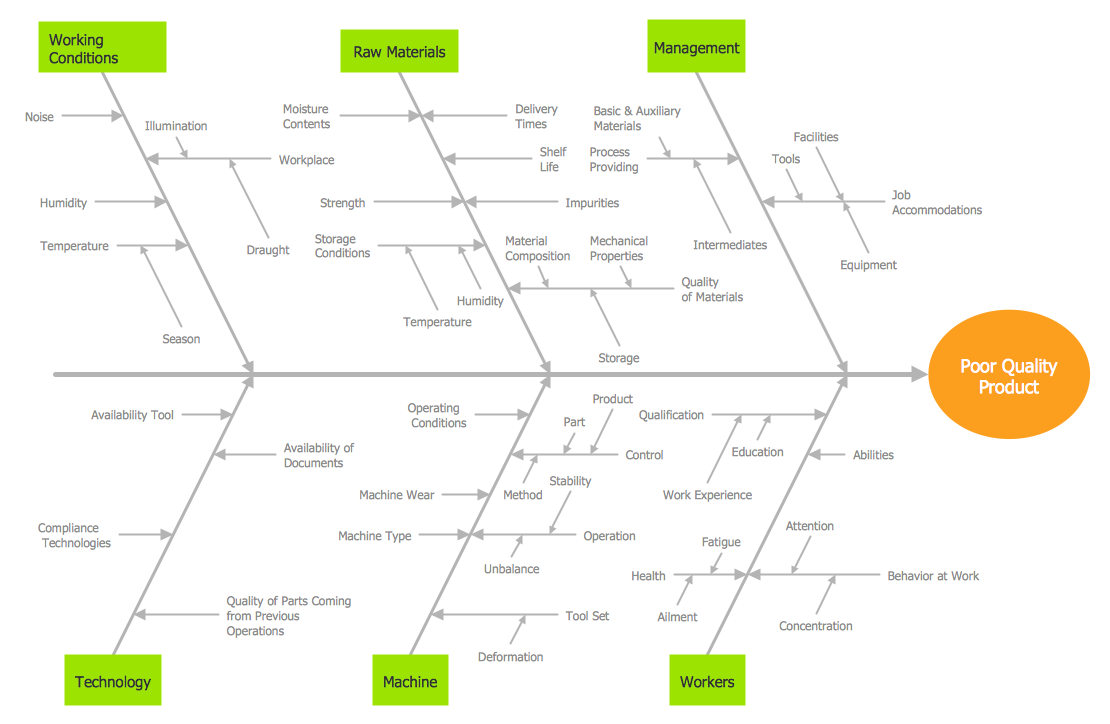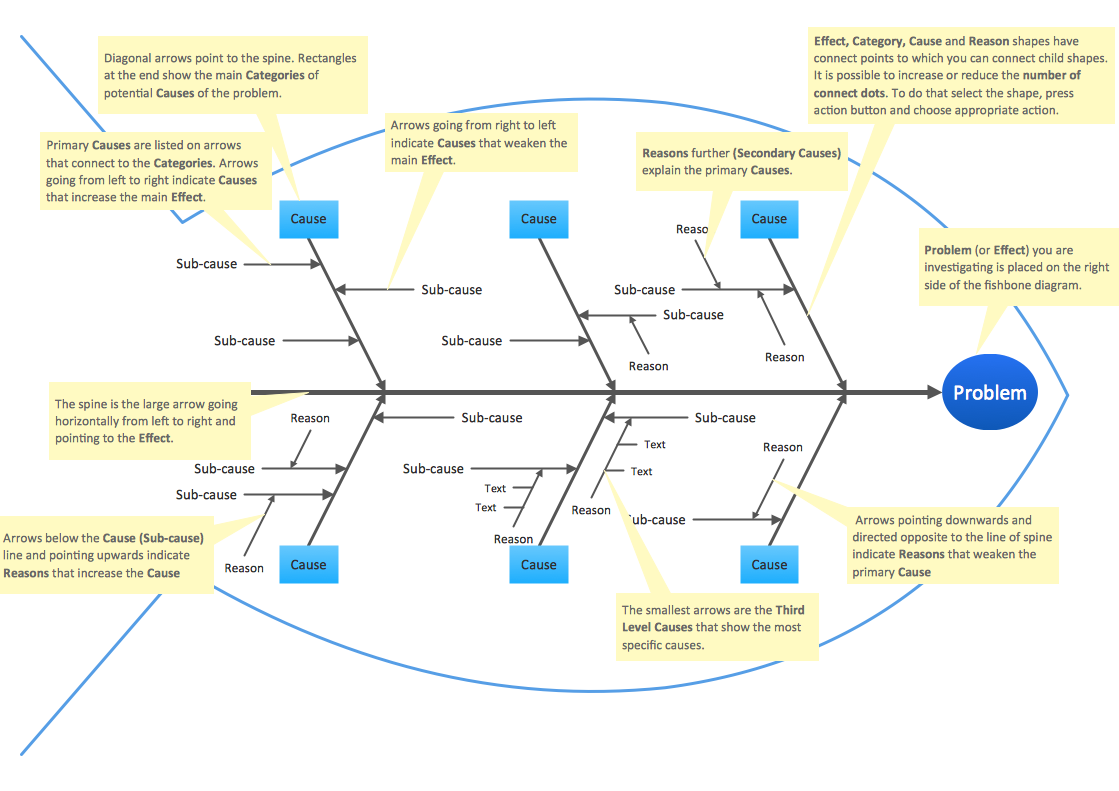
Review the problem list and determine if cause or effect -Examine each item from the list available, and determine the best “fit” under each one of the categories.The following categories may also be used to group causes or enablers: system, policy, vendor, people, procedures, and/or technical expertise. Typical categories (shown in the example) include Machine, Materials, Methods, Personnel, Measurements & Environment. This can be done using brainstorming or derived from interview notes. Identify cause categories (problem Ishikawa) or enabler categories (positive Ishikawa), and place them at end of the fish’s “ribs” or “bones.” – Identify and confirm cause categories for a problem Ishikawa (or enabler categories for a positive Ishikawa), and place in boxes at the end of the fish’s “ribs” on the right-hand side.Construct a general problem statement and place it at the “head” of the diagram – Construct an overall problem, main effect, or customer satisfier statement at the “head” of the diagram (Right-hand side center with a box around it and draw a horizontal arrow running to it).Print a problem list and cut problems into individual strips – Reprint the problem statements, cut them into individual strips, and tape the strips to a flip chart or board for review.(Assign original problem numbers for tracking.) Remove duplication – Remove duplication and combine like problem statements to synthesize the list into a manageable size.Review candidate problems – Review all candidate problems from the consolidated lists obtained during the interview process.Conduct interviews, and brainstorming sessions and document findings to determine customer problems. Identify and agree on the problem statement (effect) -Examine all the elements and factors that hinder an organization from achieving its objectives.

Use the activity flow as the backbone of the Ishikawa with the desired activity result (or output) at the “head.” For each activity on the flow, brainstorm possible causes (and/or enablers), and document them on the diagram radiating out from the activities. This technique can also be used to analyze the causes of problems inherent in an activity flow. Actions to affect the required change can then be derived from reviewing the enablers. This application of the technique can be quite useful, during goal setting or implementation planning. They are constructed in the same manner as a problem Ishikawa, except enablers replace causes and a desired effect or goal replaces the problem. The diagram will show the factors needed to invent a new approach, new business philosophy, or achieve a goal. You can use it in your Sprint Retrospective.Ī Positive Ishikawa diagram can provide a beginning to solutions development. As described here, this “positive Ishikawa” will have the desired effect at the “head” and categories of enablers or factors as the “bones”. Ishikawa diagrams can also be an effective tool for communicating what essential factors are needed to achieve a positive outcome or result. It could be used in affinity diagram sessions too. A problem or the defect statement is placed at the “head” of the diagram, and categories for grouping potential causal factors are placed as “bones.” This will be referred to as a “problem Ishikawa.” The technique is useful in brainstorming sessions to identify potential causes and areas for further investigation. It is very useful when the analyzed defect has multiple causes.

Ishikawa diagrams are used for defect analysis ( Root Cause Analysis). It is also known as Fishbone Diagrams, Herringbone Diagrams, Cause-and-Effect Diagrams, or Fishikawa. Ishikawa diagram is a graphic technique, that is used for displaying the characteristics of a given situation or problem.


 0 kommentar(er)
0 kommentar(er)
